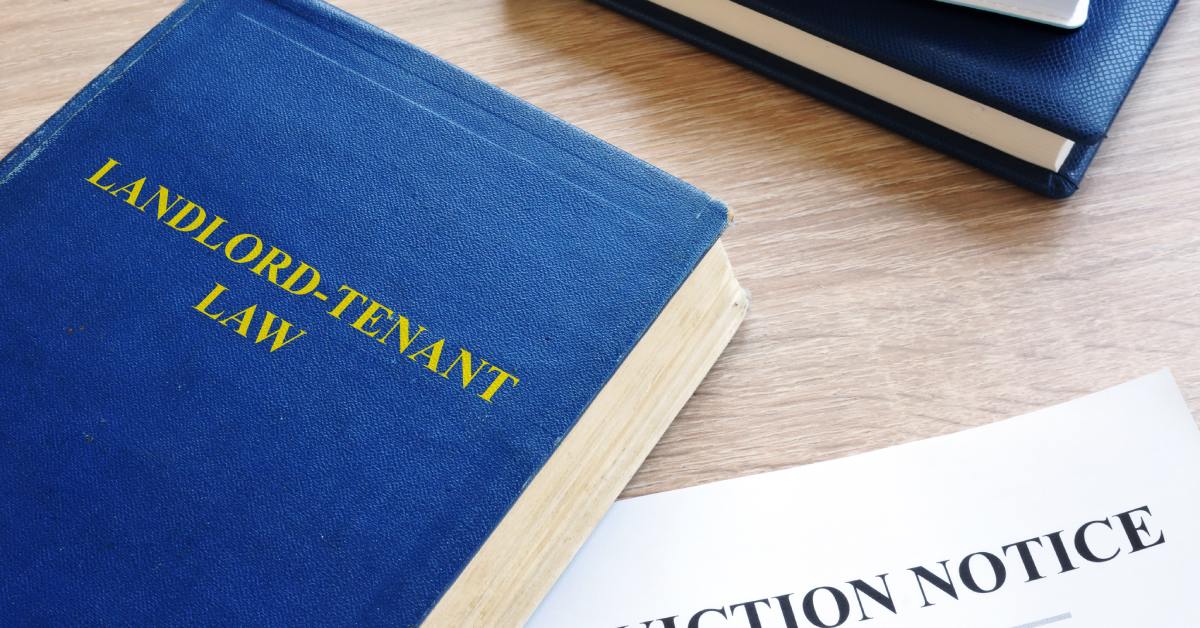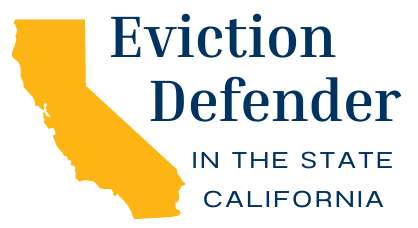
Receiving an eviction notice is often a nightmare scenario. One thing that renters in California may not understand is that there are many versions of an eviction notice they can receive from their landlord. But what do these notices mean, and how do they differ?
At Eviction Defender, we’re intimately familiar with the eviction process and all its legalities, including the many forms of eviction notices. In this guide, we’ll explain the types of California eviction notices, what they mean for renters, and the key actions and resources tenants must know for responding to these notices.
Understanding the Legal Framework for Evictions
California’s laws around eviction protect tenants and landlords, but the state is generally considered pro-tenant due to protections such as the Tenant Protection Act of 2019. This act, along with local rent control ordinances, establishes a legal structure that both parties must follow.
An eviction notice is the first formal step in this process and must be in writing; a verbal notice, text message, or email is not legally sufficient. A valid eviction notice must comply with strict legal standards. This includes providing accurate details, such as the reason for the notice and the exact amount of rent owed, if applicable.
There are also legal considerations regarding the delivery of the notice. Correct delivery methods include giving it to the tenant in person, leaving it with another adult at the property and then mailing a copy, or posting it on the property and mailing a copy. Failure to meet these requirements can render the notice invalid, giving the tenant a legal defense against the eviction.
Common Types of California Eviction Notices
Not every eviction notice is the same. Here is an overview of the types of California eviction notices.

Three-Day Notice
A three-day notice is one of the most common types of eviction notices and is a common tactic by landlords to resolve specific lease violations quickly. Landlords can serve this notice for several reasons, most often for nonpayment of rent.
If you receive a 3-Day Notice to Pay Rent or Quit, you have three business days to pay the full amount of rent owed. If you pay within the three days, the landlord can’t proceed with the eviction.
This notice is also applicable to other lease violations, such as having unauthorized occupants, causing a nuisance, or using the property for illegal purposes. These violations may cause a 3-Day Notice to Perform Covenants or Quit, which gives tenants three days to resolve the violation.
However, for severe violations that the landlord deems the tenant cannot resolve, they may issue a 3-Day Notice to Quit, which does not offer a chance to fix the issue and requires you to move out within 72 hours.
The 30-Day Notice
A 30-Day Notice to Vacate is most common for tenants who are on a month-to-month lease for their domicile and have lived on the property for less than a year. This notice informs the tenant that the landlord wishes to end the tenancy and that the tenant has 30 days to move out.
In most cases where landlords employ this notice, they don’t need to provide a reason for ending the tenancy, as long as the property is not subject to “just cause” eviction protections under rent control laws.
However, it’s crucial that the landlord does not issue the notice for retaliatory or discriminatory reasons. Read the notice carefully for the reasons the landlord has given for the notice.
The 60-Day Notice
For tenants who have lived in a property for one year or more, a landlord must provide a 60-Day Notice to Vacate. This longer-term notice period acknowledges the tenant’s extended residency and provides more time to find new housing.
Similar to a 30-day notice, a reason for eviction is not always necessary unless the property falls under local rent control or the Tenant Protection Act’s “just cause” provisions. These laws are in place to prevent arbitrary evictions and ensure housing stability for long-term renters.
Other Specialized Notices To Know
Beyond the above common notices, there are other special eviction notices for specific situations. For example, Section 8 housing assistance stipulates tenants receive must receive a 90-Day Notice to Vacate before legal eviction.
There are also notices for “no-fault” evictions, which occur when the tenant hasn’t done anything wrong. Examples include when a property owner decides to move into the unit, take the property off the rental market, or perform substantial renovations.
In these cases, landlords may have to provide the tenant with relocation assistance. A Demand for Compliance notice addresses lease violations that don’t involve rent payment, giving the tenant a chance to correct the issue.
Key Actions and Resources for Tenants
If you receive an eviction notice, it’s important to act quickly and strategically. This is not the end of the eviction process; rather, it’s just the first step. You can explore California eviction defense resources if you wish to stop or delay the eviction notice.

Responding to an Eviction Notice
First, read the notice carefully. Understand the reason for the eviction, the time frame you have to respond, and what steps you can take to resolve the issue. Contact your landlord immediately to discuss the matter.
You and your landlord might be able to clear up the misunderstanding through communication, resolving the issues in the notice amicably, compromising on solutions, or collaborating on a more forgiving move-out schedule. Always keep a written record of your conversations, whether through email or certified mail, as this documentation may be vital to fighting the eviction later.
Know Your Rights as a Tenant
You have rights under California law, including the right to a habitable home and protection from improper eviction notices. If you believe the notice is invalid or that your landlord is acting unlawfully, you have the right to contest it.
This may involve filing a formal response with the court if your landlord proceeds with an unlawful detainer lawsuit. Tenant advocacy groups and legal aid organizations can provide invaluable assistance in understanding your rights and navigating the legal process.
Financial Assistance Options
If the eviction is due to unpaid rent, several resources may be available to help. The California COVID-19 Rent Relief Program can provide support, and other local housing authorities and nonprofit organizations offer temporary financial assistance. Investigating these options promptly can help you pay overdue rent and stop the eviction.
Find the Support You Need With Eviction Defender
Facing an eviction is a scary and overwhelming prospect for many renters, but you don’t have to go through it alone. For tenants, organizations like the Legal Aid Foundation of Los Angeles provide free legal assistance, and Eviction Defender in the State of California offers eviction services to help prevent and delay evictions.
We encourage you to seek legal assistance to receive support for your specific circumstances. If you need help, please contact our organization for guidance and access to services that can protect your tenancy.
